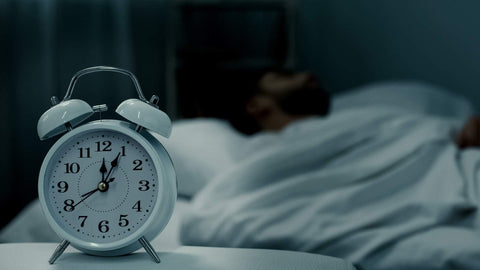Lower back pain can significantly impact sleep quality and overall well-being. Finding the right sleeping position is crucial for those seeking relief and better rest. Sleeping on your side with a pillow between your knees often provides the most comfort and support for individuals with lower back pain.
This position helps maintain proper spine alignment and reduces pressure on the lower back. For additional support, placing a small pillow in the curve of your waist can further alleviate discomfort. Some people may prefer sleeping on their back with a pillow under their knees, which can help maintain the natural curve of the spine and distribute weight more evenly.
Choosing the right mattress and pillow also plays a role in managing lower back pain during sleep. A medium-firm mattress often provides the best balance of support and comfort. Experimenting with different sleeping positions and support tools can lead to improved sleep quality, reduced pain, and better mental health outcomes for those dealing with lower back discomfort.
Understanding Lower Back Pain and Sleep
Lower back pain can significantly impact sleep quality and overall health. Proper sleeping positions and habits play a crucial role in managing pain and promoting restful sleep.
Causes of Lower Back Pain
Lower back pain stems from various sources. Muscle strain often results from sudden movements or lifting heavy objects incorrectly. Herniated discs occur when the soft inner material of a spinal disc pushes through the tougher outer layer, irritating nearby nerves.
Degenerative disc disease involves the gradual breakdown of spinal discs over time. This condition can lead to chronic lower back pain. Sciatica, characterized by pain radiating along the sciatic nerve, frequently originates from a compressed nerve in the lower back.
Acute lower back pain typically lasts a few days to weeks, while chronic pain persists for 12 weeks or longer. Identifying the specific cause is essential for effective treatment.
Impact on Sleep and Overall Health
Lower back pain often creates a cycle of poor sleep and increased discomfort. Pain can make it difficult to find a comfortable sleeping position, leading to frequent waking and reduced sleep quality. This lack of restorative sleep can exacerbate pain sensations and impair daily functioning.
Chronic pain and sleep disturbances can contribute to mood changes, decreased concentration, and reduced physical activity. These factors may further complicate pain management and overall health.
Proper sleep hygiene and appropriate sleeping positions are vital for breaking this cycle. A supportive mattress and pillows can help maintain spinal alignment during sleep. Consulting a healthcare provider is crucial for developing a comprehensive treatment plan that addresses both pain management and sleep improvement.
Optimizing Sleep Position for Lower Back Pain
Finding the right sleeping position can significantly reduce lower back pain and improve sleep quality. Proper alignment of the spine during sleep is crucial for alleviating discomfort and promoting healing.
The Fetal Position: Pros and Cons
The fetal position involves curling up on your side with knees drawn towards the chest. This position can help relieve pressure on the spine and reduce lower back pain.
Benefits include:
- Opening up spaces between vertebrae
- Reducing stress on the lumbar region
Potential drawbacks:
- May cause hip and shoulder discomfort if maintained all night
- Can restrict deep breathing
To optimize the fetal position, try placing a pillow between your knees. This helps maintain proper hip alignment and reduces strain on the lower back.
Sleeping on Your Back and Spine Alignment
Back sleeping is often recommended for those with lower back pain. This position allows the spine to rest in a neutral alignment, distributing weight evenly.
Key advantages:
- Minimizes pressure points
- Supports natural curvature of the spine
To enhance back sleeping:
- Use a medium-firm mattress for adequate support
- Place a pillow under your knees to maintain the spine's natural curve
- Support your neck with a firm pillow
Some individuals may find back sleeping uncomfortable at first. Gradual adjustment over time can help acclimate to this beneficial position.
Side Sleeping Adjustments
Side sleeping is popular but can potentially misalign the spine without proper support. Adjustments can make this position more back-friendly.
Tips for optimal side sleeping:
- Keep legs slightly bent
- Place a pillow between knees for hip alignment
- Use a body pillow for full-body support
A medium-firm mattress is ideal for side sleepers, providing enough give to accommodate hip and shoulder curves while supporting the spine.
Side sleeping on the left side may have additional benefits, such as improved digestion and reduced acid reflux.
The Perils of Stomach Sleeping
Stomach sleeping is generally discouraged for those with lower back pain. This position can flatten the spine's natural curve and strain neck muscles.
Risks of stomach sleeping:
- Increased pressure on the lower back
- Neck twisting leading to pain and stiffness
- Potential for misalignment of the entire spine
If unable to avoid stomach sleeping, use a thin pillow under the pelvis to slightly elevate the lower back. This can help maintain some spinal curvature.
Transitioning away from stomach sleeping may take time. Start by using pillows to prevent rolling onto your stomach during the night.
Utilizing Pillows for Extra Support
Strategic pillow placement can significantly enhance sleep comfort and spinal alignment, regardless of preferred sleeping position.
Pillow recommendations:
- Wedge pillows for gentle elevation of upper body
- Lumbar support pillows for filling the gap between waist and mattress
- Body pillows for full-length support in side sleeping
Experiment with different pillow types and placements to find the most comfortable and supportive configuration for your specific needs.
Remember that pillow support should complement, not replace, a supportive mattress. Both elements work together to promote proper spinal alignment during sleep.



